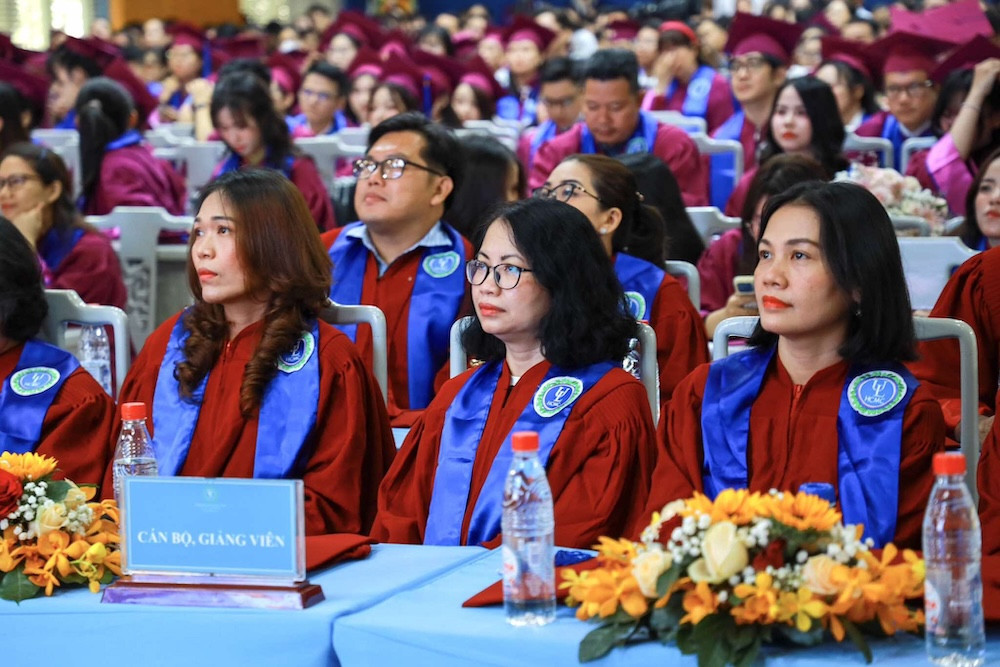
The HCMC University of Social Sciences and Humanities pays double the foreigners' salaries, and other universities also offer very high salaries.
HCMC University of Technology is recruiting 27 scientists with PhD qualifications or higher in some certain fields, including microchip design/semiconductor technology, data science/computer science, mechatronics engineering/automation, applied mathematics, chemical engineering/biotechnology/material technology.
Under the uninversity’s policy, Vietnamese scientists receive a basic salary as per state regulations, plus a job position pay based on rank: VND18 million/month for PhDs, VND28 million/month for associate professors, and VND33 million/month for professors.
The university states that the average income of lecturers ranges from VND35-45 million/month for PhDs and VND85 million/month for associate professors and professors. Scientists also receive attractive holiday and Tet bonuses, averaging 20 percent of their state salary and job position pay. Additionally, they have opportunities to benefit from scientific research support policies.
For foreign lecturers, the HCM City University of Technology pays job salaries three times higher than that of Vietnamese counterparts: VND54 million/month for PhDs, VND84 million/month for associate professors, and VND99 million/month for professors. Foreign scientists also receive two round-trip flight tickets per year, assistance with food and accommodation for the first three months, and help with paperwork during their work.
The HCM City University of Social Sciences and Humanities is recruiting 17 individuals with doctorates or higher. Under its policy, Vietnamese scientists receive a basic salary per state regulations, adjusted by years of service, plus a job position salary of VND15 million/month.
New hires under the talent attraction policy receive a lump sum of VND200 million for professors, VND150 million for associate professors, and VND100 million for PhDs.
For foreigners, the university pays double the job position salary, at VND30 million/month, and provides two round-trip flight tickets per year, support for food and accommodation in the first three months, and assistance with paperwork during their work.
Under the talent attraction policy of the University of Economics and Law, professors joining the university staff receive VND350 million, associate professors VND250 million, and PhDs VND150 million. Additionally, lecturers are awarded VND150 million upon achieving professor standards and VND100 million upon achieving associate professor standards.
In terms of income, PhDs with over three years of experience receive VND35 million/month, associate professors VND55 million/month, and professors VND65 million/month.
Though specific figures aren’t disclosed, the university states that foreign candidates receive similar policies to Vietnamese ones, with other negotiated benefits shown in the labor contract.
An Giang University pays Vietnamese scientists a salary and allowance of VND15 million/month, while foreigners receive VND20 million/month, plus support for a round-trip flight ticket per year, accommodation at an international guesthouse, and other benefits.
Beyond high incomes, professors and PhDs working at HCM City University of Technology, the HCM City University of Social Sciences and Humanities, the University of Economics and Law, and An Giang University also enjoy benefits applied to all member schools of the Vietnam National University, HCM City (VNUHCMC).
VNUHCMC has the VNU350 policy (a plan to attract, develop, and retain talent), targeting 350 scientists with PhD qualifications or higher. Under this policy, young candidates must meet one of four criteria: have scientific articles published in reputable journals or conferences; hold successfully registered patents or inventions; have transferred scientific or technological products; or pursue new, promising research directions aligned with the university’s development strategy.
Leading scientists must meet all five criteria regarding experience and capability: head a research group or laboratory; lead scientific and technological projects; have works published in reputable scientific journals or own exclusive patents; have teaching experience and supervision of doctoral students; and have domestic and international connections (members of international scientific-technological organizations, participating in organizing international conferences, or editing/reviewing articles for international journals).
Professors and PhDs can enjoy certain benefits: In the first two years, young scientists are granted a Type C research project (maximum funding of VND200 million), and by the third year, a Type B project with maximum funding of VND1 billion.
In the fourth and fifth years of work, young scientists receive support to invest in laboratories for scientific research (maximum funding of VND10 billion) and assistance with procedures to be recognized as meeting national associate professor standards.
Meanwhile, leading scientists are granted a Type B research project (maximum funding of VND1 billion) in the first two years. In subsequent years, they receive support to invest in laboratories for scientific research (maximum funding of VND30 billion), assistance to establish strong research groups and support to register to lead projects at various levels.
Le Huyen